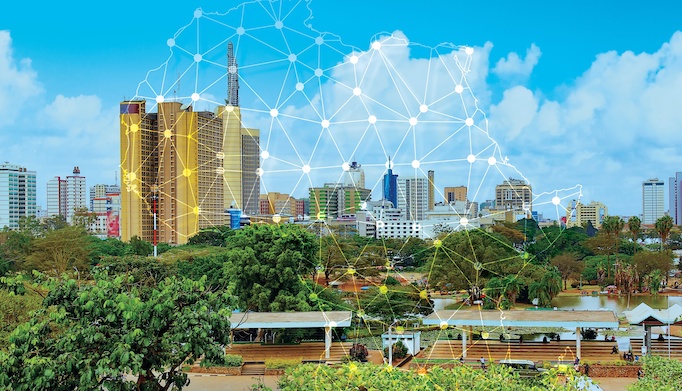Latest News
GSMA Report Says Satellite is Key to Reach Universal Connectivity in Sub-Saharan Africa

Photo: Via Satellite illustration/Shutterstock
Satellite and HAPS technologies will play an important role in reaching universal connectivity in sub-Saharan Africa, GSMA said in a new report on the mobile economy in the region.
The mobile industry association recently released the report, “Mobile Economy Sub-Saharan Africa 2024.” GSMA reported that nearly 44% of the region’s population was subscribed to a mobile service by the end of 2023. Mobile internet penetration has been growing and reached 27% in the region by the end of 2023.
However, there is a significant usage gap — 60% of people in the region are covered, but they either have a phone and do not use mobile internet, or do not have a device to use mobile internet. According to the report, this is the highest usage gap in the world.
The report identified interest in non-terrestrial network (NTN) connectivity as one of the key trends shaping the mobile ecosystem in sub-Saharan Africa. Satellite is not new to the region, but advancements in Low-Earth Orbit (LEO) and high-altitude platforms (HAPS) along with mobile operators partnering with satellite companies has spurred new interest.
GSMA said that LEO and HAPS have brought about more collaboration between telecoms and satellite operators for remote area connectivity, disaster response, and maritime services. Sub-Saharan Africa has some of the most challenging terrain for terrestrial networks with rain forests, deserts, and mountain ranges. Satellite and HAPS can help mobile operators in this region expand their networks.
The report cited a number of examples including Airtel Nigeria which has a satellite dish in Lagos for Eutelsat OneWeb LEO broadband service. Eutelsat OneWeb began deploying services in each of Airtel Africa’s 14 markets following tests in South Africa in September 2023.
SpaceX’s Starlink service has expanded in the region and as of September 2024, Starlink is available in at least 14 markets including Benin, Botswana, Ghana, Kenya, Mozambique, Nigeria, Rwanda and Zambia.
Africa’s largest mobile network operator MTN Group is working with a number of satellite operators — Onmnispace, OneWeb, Starlink, Lynk Global, and AST SpaceMobile. Its work with Omnispace is in S-band, and the other companies for direct-to-device services.
“For telecoms operators, satellites and NTN connectivity offer access to new customers in underserved areas and the capability to provide connectivity in remote areas. For satellite providers, operators’ existing relationships with end users and (where relevant) spectrum holdings are crucial for satellite solutions to scale. However, the availability of compatible devices will affect the take-up of satellite-enabled services,” the report says.
Get the latest Via Satellite news!
Subscribe Now